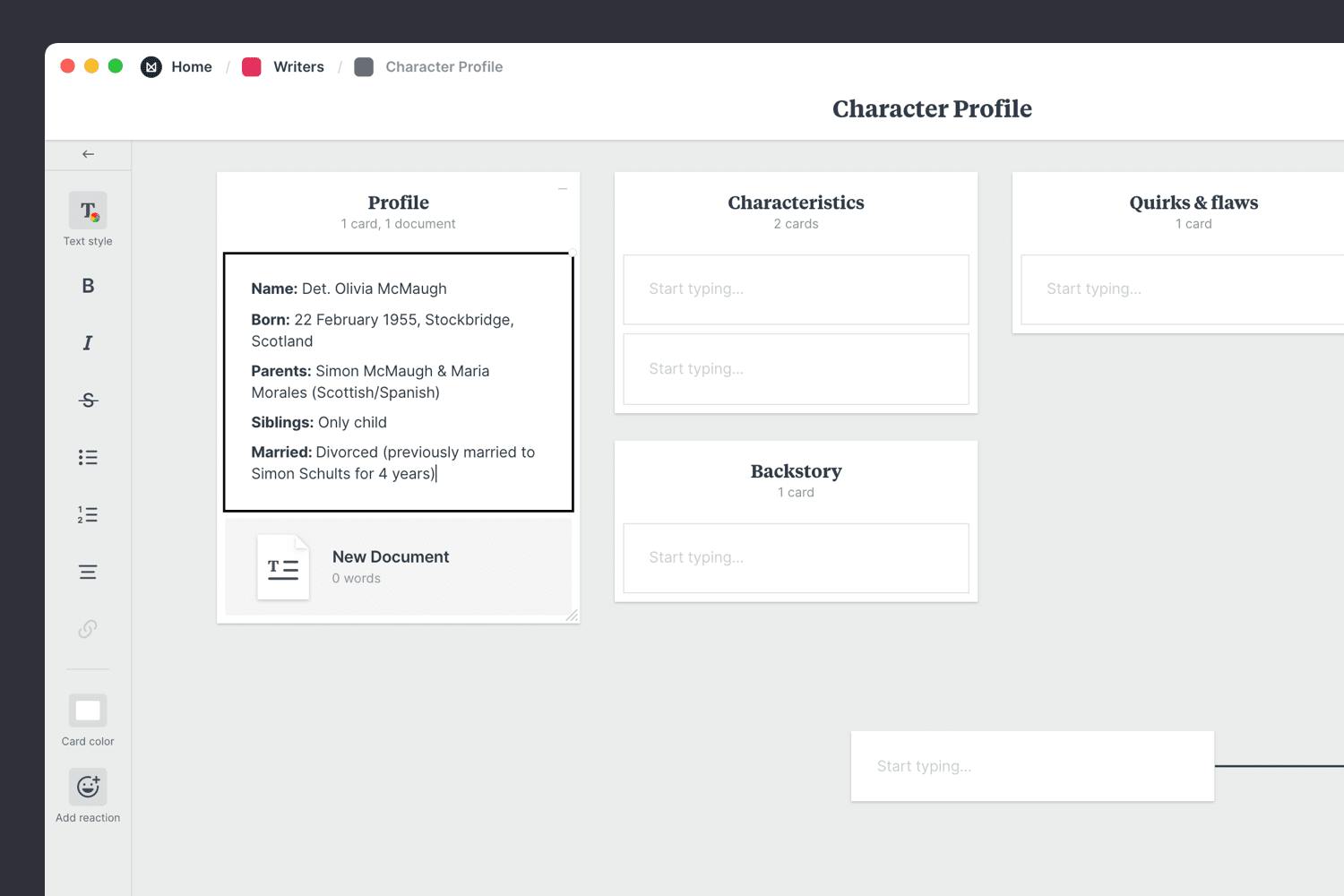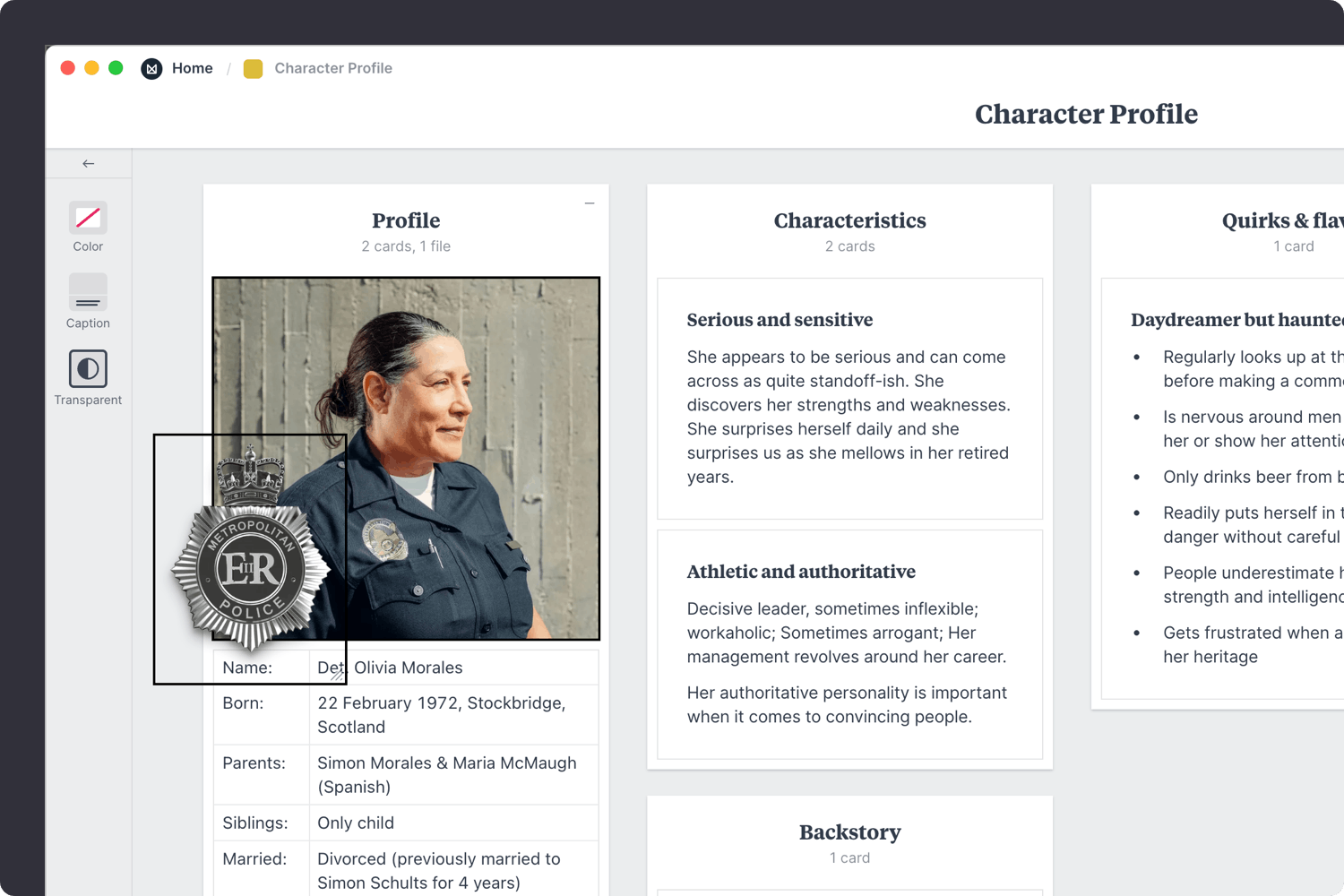Creating a character profile is a great way to map out a fictional character's life. No matter whether you're a professional or a hobbyist writer, creating a profile is the best way to define your character's backstory, appearance, traits, goals and flaws. Everything you'll need to create an authentic, and relatable character that enriches your story.
Round-out your characters by giving them a detailed personality that stretches beyond the story itself. Some aspects of their personality won't make it into the story, but will help to inform the decisions they make as the story unfolds.
Once you've imagined your characters, you can map their relationships to understand them from a different perspective. To learn more, check out our guide to creating compelling characters.
This template is part of our guide on How to plan a novel.








